The 12 Corporate Brand Types
Tomoya Arima, Brand Research Consultant
Many companies struggle after they have (even successfully) run a brand study.
Goals and KPIs of a brand value are not easy to set, as they are broad and not all quantifiable or sometimes not even identifiable but more human, emotional, contextual, and subjective.
Put aside that, setting a target role model company might be a simple way to aim the direction and set KPIs. But, what kind of target company should a brand set as their goals or benchmark to compare themselves?
Indeed, we are often asked, "Which company is a good benchmark?" or "Should we look at our direct competitors within our business domain, or should we look outside?" by our clients.
Other frequent questions are, whether a brand image factor with a high perception can be said as the strength of the company and whether it is okay to further focus on those brand image factors.
As one of the solutions to those questions, Nikkei Research analyzed, formulated, and categorized 600 notable corporate brands in Japan from its proprietary corporate brand survey data. With that corporate brand classification, we get to know the brand's position, level of strength, and characteristics over the brand image and experiences that it provides. Comparing across industries is also possible.
For the classification, we separated the variables into two, (i) the brand image/attractiveness and (ii) the experience value.
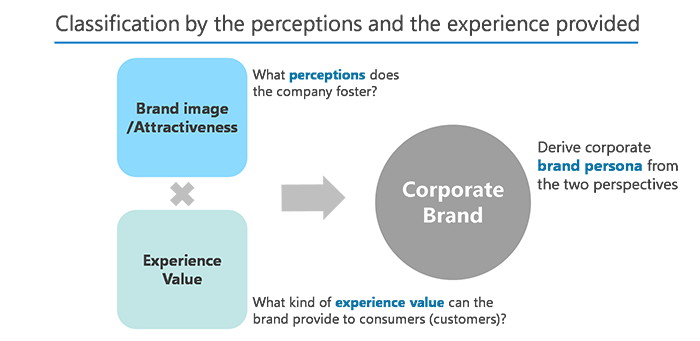
While it is not just a classification by brand image, we included experience value because, from a corporate perspective, businesses are becoming more of a service rather than just providing some product.
Having people feel the brand value during their usage/experience is becoming much more important nowadays. Moreover, for consumers, the amount of information exchanged is becoming highly active, and the contents are mostly based on experiences over the actual usage.
The value of the corporate brand is not formed by just communication or promotion by that company. Rather, it is amplified among the consumers, and the value is co-created. The structure undermines this situation, incorporating the experience value into the formula.
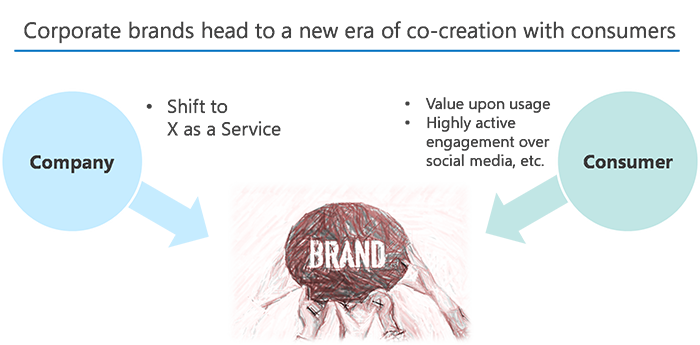
In a nutshell, the brand image/attractiveness is how the company is viewed, whereas the experience value is what kind of benefits the brand is providing. With the combination of these two aspects, we can derive corporate brand personas.
For the brand image/attractiveness, we used statistical methods to group the items that are close together and created four major brand types.
- Creating unique businesses
- Focused on quality
- Up-close, physically & psychologically
- Leader with excellent management
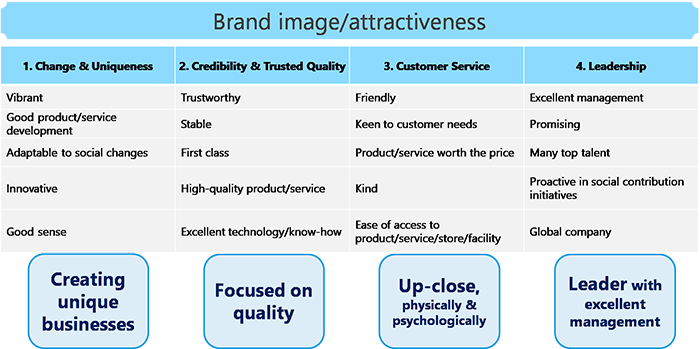
The experience value is grouped with close items as well, into three main brand types.
- (a) Support one’s self-actualization
- (b) Make every day feel comfortable
- (c) Widening perspectives/continuous relation
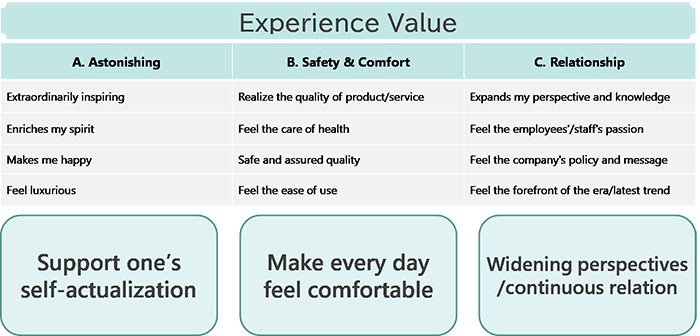
With the combination of four characteristics by the brand image/attractiveness and three characteristics by the experience value, we get the 12 corporate brand types.
- Stimulate Creativity
- Luxury Quality
- Delight & Popular
- Awe-inspiring Trailblazers
- Unique & Secure
- Trusted Quality
- Comfortable Partner
- Comfort Champions
- Knowledge Co-Creation
- Trust Co-Creation
- Prevalent Support
- Visionary Leaders
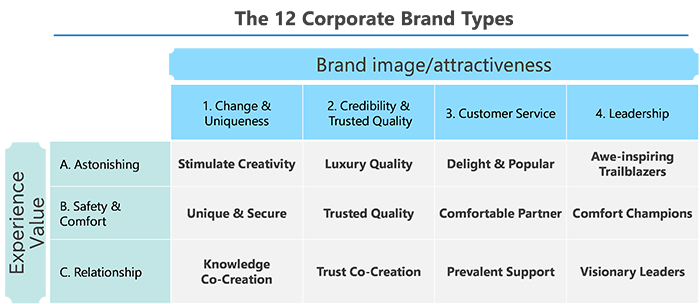
Across 600 companies classified into either of the most relevant 12 types, "Visionary Leaders" had the highest share, followed by brands of "Trusted Quality."
Companies of "Visionary Leaders" have high scores of leadership in brand image and relational strength in experience value, have good global performance, or simply a brand that leads the industry.
Many companies had high scores of trustworthy and high-quality products/services in the brand image with a combination of safe and security factors in experience value. Those companies can be described as a stable brand.
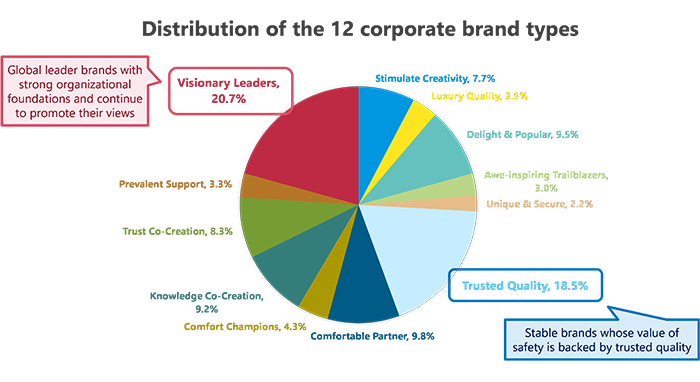
We listed a representative company of each of the 12 brand types.
Oriental Land (operator of Tokyo Disney Resort), Hoshino Resorts, and Nintendo are brands that stimulate creativity and inspire imaginations or provide not-an-ordinary day experiences – the “Stimulate Creativity” brands.
Brands like Toto, Kewpie, and Ajinomoto can be said as reliable quality brands, the “Trusted Quality” brands.
The “Visionary Leaders” are well-established, world-leading brands such as Toyota Motor, Uniqlo, and Google.
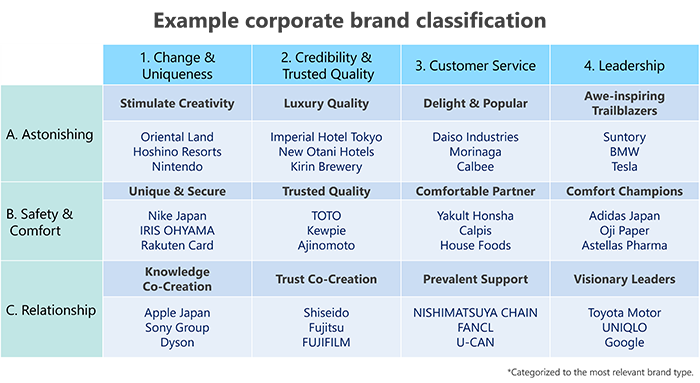
Despite the differences in business between each industry, there are surprising discoveries that some seemingly indifferent companies get classified into the same type. On the other hand, you can compare not only within your industry but also across different industries at the same time.
please contact us below.

